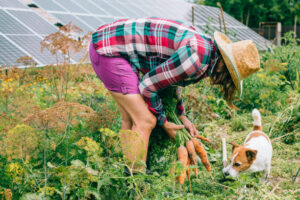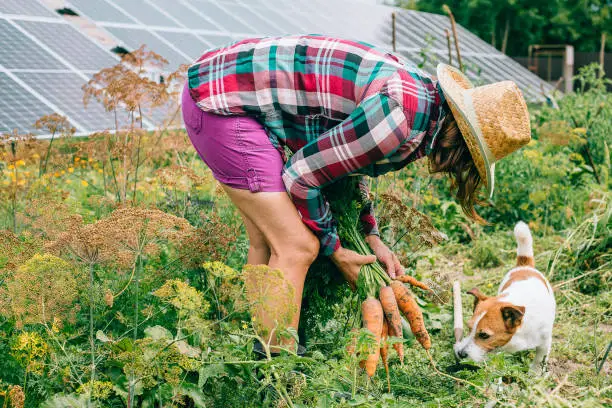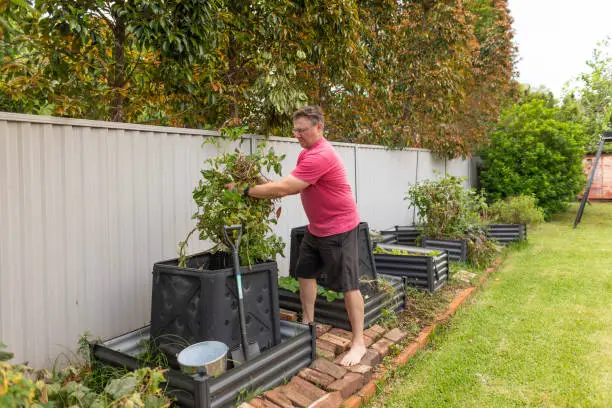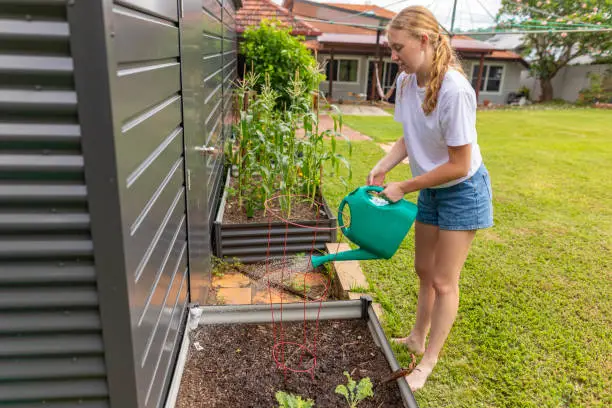Backyard Homesteaders’ Guide to Hot Weather Watering
When the sun rises higher and the days lengthen, those who practice backyard homesteading confront both promise and challenge. Summer growth requires attention and knowledge of homestead garden care. Watering, especially in the heat, is essential to this effort. This article discusses ways to keep your garden alive and vibrant in hot weather, making your backyard homestead a lush, productive haven.

Understanding your garden’s demands is the first step to creating a watering strategy that promotes development without wasting resources. Plants are stressed and fragile when the sun rapidly depletes soil moisture. However, careful planning can mitigate these issues, keeping your garden lush.
Watering in the morning is practical, not merely a ritual. Morning watering helps soil absorb moisture before the sun’s intensity causes evaporation, reaching deep plant roots. This promotes strong roots that can survive hot temperatures.
Mulching is essential against soil moisture loss. A substantial covering of organic mulch protects plants from water evaporation, maintaining proper soil moisture and moderates soil temperature, protecting plants from hot extremes.
Drip irrigation revolutionizes backyard homestead watering. This technology feeds water directly to each plant’s base, saving waste and evaporation from sprinkler systems. Drip watering prevents leaf-borne illnesses by minimizing foliage touch, making plants healthier.
Different plants need different amounts of water. Knowing your garden’s different residents lets you adapt your watering techniques to provide each plant with what it needs. Over- or under-watering causes stress, but selective watering conserves water.
Your plants’ watering needs depend on their life cycle stage. New seedlings and transplants need constant hydration to grow. Mature plants with deeper root systems may require less frequent but deeper watering. Watering your plants according to their life cycle stages ensures optimal growth and development.
Rain barrels in your backyard homestead supply eco-friendly water, and enjoy nature’s wealth. Rainwater collection for gardening saves municipal water use and gives plants natural, untreated water. Sustainable homesteading ideas underpin this simple yet effective technique to strengthen your garden’s heat tolerance.
Healthy soil is essential for a successful garden, especially in bad weather. Organic matter promotes soil water retention, keeping plants wet during heat. Regular soil tests can direct amendments to encourage plant development.
Monitoring your garden’s health lets you adapt your watering plan. Stress symptoms like wilting or discolored foliage may require more watering. Yellowing leaves or damp soil indicate overwatering, therefore reducing watering. The responsive strategy meets your garden’s needs even as conditions change.
Modern technology can improve backyard homestead watering efficiency. Sensors measure soil moisture in real-time, enabling accurate watering. Smart irrigation controllers can automate watering schedules based on weather forecasts and garden needs, optimizing water efficiency and ensuring your garden gets enough water.
Finally, networking with backyard homesteaders is beneficial. Sharing water management techniques and experiences broadens your perspective. Through local gardening clubs, internet forums, or neighborhood gatherings, this collective learning can inspire heat-resistant watering methods.
Summer garden watering is both an art and a science. If you take a deliberate, informed approach, your backyard homestead may endure the summer heat and thrive, providing an abundance of fruits, veggies, and flowers. These watering tactics can help you confidently and joyfully face summer gardening’s challenges and benefits.
Maximizing Garden Bounty: Mid-Season Planting Tips for Homesteaders
Backyard homesteading fans are at a crossroads as summer reaches its peak. While early crops are harvested and the garden enjoys the season, foresight and preparation are possible. Mid-season planting, as old as agriculture, can boost garden yield into the fall. This careful strategy maximizes and diversifies the land’s production to feed the homesteader through fall and beyond.
Seasons determine the garden’s lifetime. As certain crops peak and fade, they leave a void of possibilities. The void in your lawn is a canvas waiting for new strokes. Succession planting lets the gardener create a second growth and abundance phase.
Mid-season crop selection involves timing and temperature. These crops must flourish in the declining summer heat and mature before frost. Root vegetables, including carrots, beets, and turnips, are ideal due to their hardiness and short growth cycles. Kale, spinach, and Swiss chard also thrive in autumn gardens.
Mid-season planting rejuvenates the soil and allows gardeners to choose crops. The first growing season can deplete soil nutrients, so gardeners must replenish them. To replace soil nutrients for the new plantings, add compost, well-aged manure, or a balanced organic fertilizer.
Seasonal changes can affect water management. Late summer and early fall necessitate less evaporation than peak summer. Vigilance remains crucial. Newly sowed or transplanted seedlings need constant moisture to germinate and grow roots. In addition to preserving soil moisture, mulch can stabilize soil temperature for young plants.
As the garden changes, pest and disease management must, too. Cooler, damper weather favors different garden pests. Healthy gardens require regular observation and early intervention. Neem oil and diatomaceous earth can safeguard organic homesteaders without compromising their values.
Mid-season planting symbolizes resilience, sustainability, and stewardship. It represents a desire to live in peace with nature and harvest its beauty and food without depleting it. This traditional agricultural approach is relevant to sustainable living and local food sovereignty.
Mid-season planting may represent the gardener’s optimism most profoundly. It represents hope, a belief in growth and rejuvenation. Each seed planted expresses the gardener’s hope for a prosperous future.
Mid-season planting supports backyard homesteading’s goals of self-sufficiency and environmental protection. A holistic approach to garden ecosystem maintenance includes crop selection, soil health, and adaptive water management. This symbiotic link between grower and garden epitomizes homesteading, where land cultivation promotes personal growth and environmental responsibility.
Share surplus harvests, seeds, or expertise with the community to strengthen backyard homesteading’s social fabric. This community aspect enhances gardening, building ties with neighbors and friends outside the garden. Homesteading thrives in this common goal of a more sustainable and integrated lifestyle.
Mid-season planting shows the gardener’s flexibility and planning. It requires knowledge and intuition, balancing horticulture with care and anticipation: the produce and the satisfaction of gardening judge this project’s success.





Leave a Reply